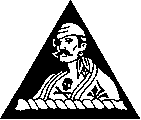|
This was a night precision mission involving 30 planes from the
6th Bomb Group:
On 7 April the Sixth Contributed thirty of a total of ninety-eight Wing
Superforts which attacked Mitsubishi Aircraft plant at Nagoya. GP
bombs were used with excellent results. Photos later revealed 90
percent of the roof area destroyed. About twelve aircraft were hit
by flak fragments with estimated time needed for repair varying from an
hour to several days. Shortly after takeoff, Victor 5347 of the 24th
Squadron, crashed and exploded in the ocean about two miles east
of the island. Sgt W. P. Ford, CFC gunner, Sgt. E. E. Birsner,
radar operator, Sgt T. F. Wipperman, right gunner and Sgt J. A.
Douglas, left gunner, were only slightly injured and were
recovered by rescue boats along with the body of Lt Lloyd E.
Rinne, navigator. Listed officially as killed in action in the
crash are Capt Clark A. Preston, airplane commander, and five
other members of the crew in addition to Lt Rinne.
Sgt Joseph L. Slotter, Jr. and Sgt Arthur B. Fannon, 24th Squadron
gunners were wounded by flak during the raid. In spite of their
serious wounds there men stayed at their positions and continued to man
their guns as the plane was forced to leave the formation, becoming a
target for enemy fighters. Fire from their guns kept the enemy
fighters at bay. They were awarded the Silver Star for their
gallantry in action.
[Pirate's Log, p. 35]
According to the DFC Citation for Crew #2406:
For extraordinary achievement while participating in
aerial flight on 7 April 1945 from a base in the Marianas Islands. These
individuals were combat crew members of a B-29 aircraft leading a
formation on a daylight precision strike on the Mitsubishi aircraft plant,
Nagoya, Japan. On the bomb run, fighter opposition and intense flak were
encountered and their airplane sustained battle damage. Despite this,
however, these veterans of repeated assaults against the home islands of
Japan pressed the attack, causing severe damage to the enemy by aiding
materially in destroying seventy-five percent of the target area. This
flight was accomplished by flying 3,000 miles non-stop, in the face of
difficult navigational problems, and the danger of engine failure with
consequent ditching many miles at sea or bail out over enemy territory.
The professional skill, teamwork and determination displayed in
successfully striking this high priority target reflect great credit on
themselves and the Army Air Forces.
First Lieutenant WAILS HAWKINS (then Second Lieutenant)
as Pilot
First Lieutenant CLINTON L. WRIDE as Bombardier
Master Sergeant GEORGE E. MCGRAW (then Technical Sergeant) as Flight
Engineer
Staff Sergeant WALTER W. WIERNIK as Radio Operator
Staff Sergeant MAX A. ADAMS (then Sergeant) as Radar Operator
Sergeant NORMAN S. KRUVANT as Central Fire Control Gunner
Sergeant ROBERT J. BURKLE as Right Blister Gunner
Sergeant ROBERT A. GRANT as Left Blister Gunner
Sergeant FLORIA D. SPERO as Tail Gunner
[Transcribed by David Wilson, son of Sgt Bernard E. Wilson (Gunner, "Anonymous IV")]
A separate DFC Citation was written for Captain GORDON P. JORDAN, Aircraft Commander of Crew #2406.
According to the DFC Citation for Crew #4011:
For extraordinary achievement while participating in aerial flight 7 April
1945 from a base in the Marianas Islands. These individuals were combat
crew members of a B-29 on a bombing mission against the important
Mitsubishi aircraft engine works in the city of Nagoya, Japan. At the
assembly point off the coast of Japan it was found that the weather made
it impossible to form the Squadron at the altitude briefed, and the
Squadron Leader advised attacking a target of opportunity. This crew
however, as a result of skillful navigation and airmanship, succeeded in
rendezvousing with three other ships thirty miles west of the assembly
point. In the face of intense, heavy, anti-aircraft fire, and two fighter
attacks, they bombed the briefed primary target at 16,000 feet, inflicting
severe damage on the enemy. As a result of this strike they aided
materially in damaging huge areas of the factory, as evidenced by later
reconnaissance photographs showing more than two million square
feet--sixty-two percent--of the total roof area of the plant damaged.
Sixty-three large buildings and twenty-seven smaller buildings were
destroyed. The perseverance, devotion to duty and high professional skill
displayed by these veterans of many missions against the home islands of
Japan contributed materially in the crippling of the enemy's aircraft
production. Their actions reflect great credit on themselves and the Army
Air Forces.
First Lieutenant CLARENCE PRESSWOOD (then Second Lieutenant) as Navigator
First Lieutenant HARRY L. FINK (then Second Lieutenant) as Bombardier
First Lieutenant HENRY E. PEELLE, JR. (then Second Lieutenant) as Flight
Engineer
Technical Sergeant DUDLEY J. NUTTLE (then Staff Sergeant) as Central Fire
Control Gunner
Staff Sergeant JOHN M. JOYCE (then Corporal) as Left Gunner
Staff Sergeant JAMES W. SMYLIE (then Sergeant) as Radio Operator
Sergeant RALPH W. HANSON, JR. as Tail Gunner
[Transcribed by David Wilson, son of Sgt Bernard E. Wilson (Gunner, "Anonymous IV")]
A separate DFC Citation was written for Captain HERBERT F. BUNTING,
Aircraft Commander of Crew #4011.
|

